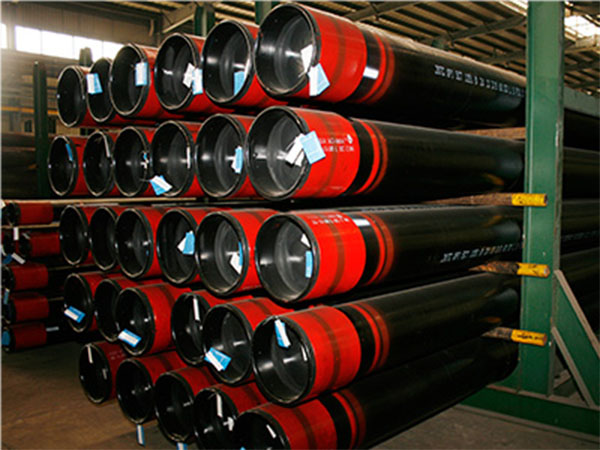Oil well pipe corrosion is a very important technical and safety problem in the oil and gas industry. It is a comprehensive problem involving many forms of corrosion in pipelines, drilling tools, casing and storage and transportation. The following is a comprehensive description of the corrosion status and characteristics of each part:

1. Corrosion of oil well pipe and gathering pipeline
Corrosive medium
Oil well pipes (including oil casing, gathering lines and storage tanks) are mainly eroded by parallel production, shallow water and injected fluids, among which the corrosive media mainly include:
H₂S (Hydrogen sulfide) : In oil Wells (especially gas Wells), once hydrogen sulfide is present, it is easy to cause hydrogen embrittleness (HIC) and stress corrosion cracking (SSCC), resulting in pipe rupture.
CO₂ (carbon dioxide) and bicarbonate ions: interact with dissolved oxygen in water to cause uniform corrosion and local corrosion (perforation).
O₂ (Dissolved oxygen) : It can cause atmospheric corrosion and local oxygen concentration of the battery, especially when the protective layer is damaged.
SRB (sulfate reducing bacteria) : Through biochemical action to produce corrosive substances, accelerate the corrosion of metal surface, forming scale and pitting phenomenon.
Scale and wax formation
Scaling and waxing often occur in pipelines. Scale is often formed by Sr² + Ba² plasma deposition and when it is severe and cannot be removed by conventional pickling, it significantly reduces the pipe ID and affects normal production. However, the wax formation phenomenon needs to be cleaned frequently because of the solid deposits inside the tubing, which affects the production efficiency of the well.
Scour corrosion
Fluid erosion, cavitation and other phenomena in the pipeline can also lead to local corrosion, which is often related to high flow rate and particulate matter in the pipeline.
2. Corrosion status of drill pipe
Failure mode
In the process of drilling, drill pipe is subjected to mechanical stress (such as gravity tensile, rotary impact) and corrosion by drilling fluid and other media. The main failure forms include:
Excessive deformation: The working stress exceeds the yield limit of the material, resulting in deformation or fracture of the structure.
Perforation or fracture: Especially in the transition area of the inner wall thickening, there are more pitting pits, and cracks often expand from the bottom of these pitting pits.
Surface damage: The outer wall corrosion is light but uniform, while the inner wall corrosion is uneven, wear and mechanical damage are also common.
Protective measure
Drill pipe is typically coated with an inner coating technology that protects the inner wall from corrosion and reduces fatigue failure due to pitting and cracking.
3. Casing corrosion status
The main reason
Casing corrosion is mainly caused by the erosion of corrosive media (such as sulfate reducing bacteria, CO₂, bicarbonate ions, chloride, etc.) in the produced water (formation water).
Corrosion characteristics
The screw corrosion is serious, mainly caused by bacterial corrosion, gap corrosion and stress corrosion.
The periodic friction accelerates the corrosion and perforation of the casing, which has obvious directivity.
If the cement protection is lost due to poor cement quality, it will also accelerate corrosion.
4. External corrosion during storage and transportation
External corrosion factor
In the process of storage and transportation, oil well pipes face atmospheric corrosion (mainly caused by O2), underscale corrosion (formation of local oxygen concentration battery after the damage of the protective layer), salt spray corrosion (especially under shipping conditions) and acid spray corrosion.
Protection requirement
Manufacturers should use long-lasting anticorrosive coatings to protect pipeline surfaces that are resistant to water, salt spray, weather and strong adhesion, while users also need to take protective measures during storage and transportation to reduce the risk of external corrosion.
5. Anti-corrosion measures
In order to reduce the risk of oil well pipe corrosion, the following comprehensive anti-corrosion measures are often adopted:
Materials and design: strictly follow the standard design and material selection, select suitable pipes for different working conditions (such as low-alloy steel, stainless steel or pipes using composite protective measures).
Protective coating: The use of anti-corrosion coating, metal coating and chemical passivation treatment to form a durable protective barrier.
Add inhibitors: Add corrosion inhibitors and sulfate reducing fungicides to the medium to reduce the amount of O₂, CO₂, H₂S and other dissolved.
Cathodic protection: cathodic protection technology is used for underground or submarine pipelines to inhibit electrochemical corrosion.
Monitoring and maintenance: Establish a real-time monitoring system, regularly conduct ultrasonic, eddy current, ray and other non-destructive testing, timely detection and treatment of pipeline corrosion and defects.
Conclusion
To solve these problems, reasonable material selection, optimal design, surface treatment, anti-corrosion coating, cathodic protection and regular monitoring and maintenance measures can significantly extend the service life of the pipeline and ensure the long-term safe and stable operation of the oil well pipeline system.
